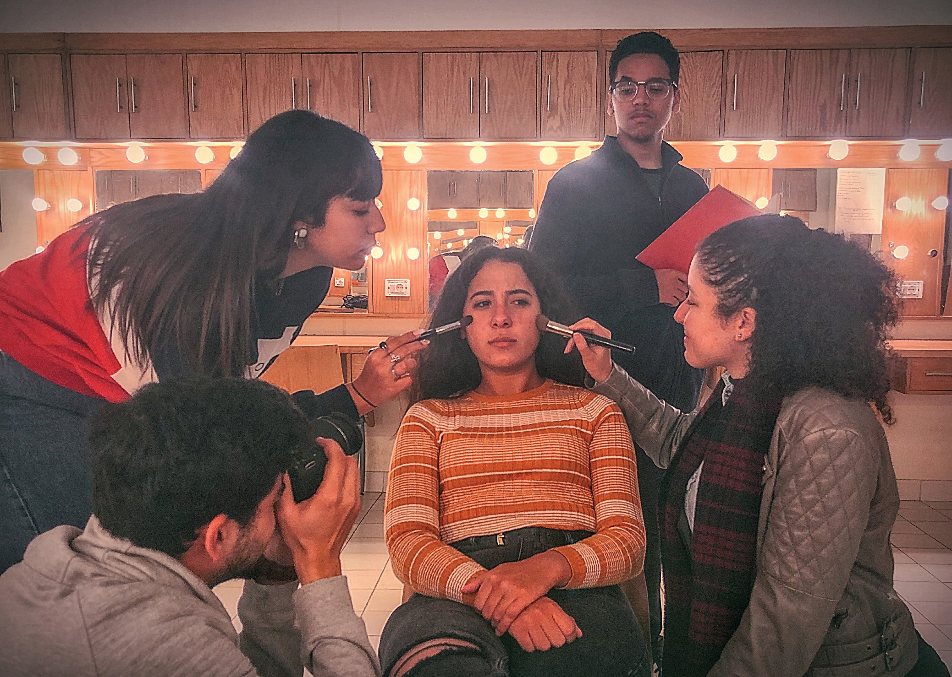EDITOR’S NOTE: End the Vicious Cycle of Bullying
Loud giggles and knee slaps as they laugh at yet another joke about her.
Friends since as long as they can remember, they think barriers are only meant for strangers.
She has been mocked for her weight, hair, clothes, the size of her nose, they way she talks, and the way she moves.
And yet, she forces a broken smile, and quietly shares their laughs, assuring herself that it’s just one more lame joke.
No need for sensitivity, she says. But her eyes betray otherwise.
You fail to comprehend the seriousness of what’s going on until she later calls and asks if the jokes carry any truth.
But you certainly can’t recall the joke. To you, it was seconds of laughter, but to her, it’s a lifetime of overthinking and shaken self-confidence.
This scenario is one I witnessed many times with a lot of my friends who were got picked on “playfully”, only realizing later that there was something wrong about it all. And hardly playful.
I can’t deny that I too have often caught myself recalling supposedly funny comments without truly comprehending why they bothered me.
But how could they not bother me when the jokes were designed to pinpoint all my insecurities and shortcoming?
Sometimes it is difficult to identify the true nature of these jokes – but make no mistake, these are scenarios when someone intentionally and repeatedly causes discomfort to someone else.
In a word, bullying.
In this case, the repeated jokes and comments not only cause discomfort but leave psychological scars as well.
Nowadays, groups of friends are constantly mocking one another just for fun. But, teasing is one thing, and bullying is another.
Cornering one person of the group to make fun of his/her weak points collectively is far beyond the limits of teasing.
It has nothing to do with one’s sense of humor, if it hurts them and it’s constantly repeated, it’s flat out bullying.
When we refer to the term ‘bullying’, the first thing that probably comes to mind is the typical image of high school jocks menacing and mocking younger kids, and bossing them around.
Or a student being made fun of because of the way they dress, the food they eat, the music they listen to, or who they choose to befriend.
Bullying is designed to demean and denigrate, to harm and humiliate.
If you were born in the 90s, you would most likely immediately recall the ‘you can’t sit with us’ mean girls kind of attitude.
As harsh and hurtful as these scenarios appear to be, the reality is that bullying can be far more dangerous with some forms not as recognizable and harder to identify.
And when we can’t recognize them, we can’t actively and consciously protect ourselves. Even worse, we risk inadvertently becoming bullies ourselves.
When you get beaten up or flat out insulted, you know that’s not the norm. You know it’s aggressive and you know your predator is not your friend.
That is why we decided to dedicate this special issue of The Caravan to the dangers of bullying, and what some are doing to eradicate it.
In the first article, we start by comparing between bullying in private and public schools. Hands down, bullying is prominent in both. Yet, the attitudes and responses are certainly different.
In ‘Sugar Coated Bullying’, we tackle how bullying can come from our closest friends, parents and partners.
There’s no sugar-coating the abuse and bullying that happens in relationships. In Couples, Ride or (Leave, But Don’t Die), reporter Reem Shaheed looks at how the music industry sends mixed messages on healthy (or otherwise) partnering and when you should call it quits.
Parental Bullying is sometimes confused for tough love, but it isn’t, Mayar Zarie reports. Studies show that bullying begins at home, and could unleash young bullies into the world.
Classism is ugly, and when it is used to bully people of different strata and background it’s reprehensible. Nada Tarek examines the type of language bullies use to demean others in the article Scowciecnomic Differences: a Trigger Cause for Bulling.
Workplace bullying is on the rise around the world, whether it comes from supervisors and managers or co-workers. How do AUCians heading into the workforce deal with these challenges? Ahmad Hefny investigates in Through the Doors and Out: Bullying in the Work Place.
From the office to the locker room.
Either from their coaches, peers, or in their locker rooms, athletes are often roughly treated just to ‘enhance their performances’. They then retaliate and quit the sport altogether because they can’t take it anymore. Or, they continue on suffering mentally and physically. Nour El Shaeri reports on this often hushed phenomenon in Locked in the Bullying Room.
These and other articles shed a light on how bullies operate and why.
We conclude with an article in Arabic about the efforts done to combat bullying and raise awareness about its impacts.
It’s crucial to recognize the problem comprehensively, focusing on all the different aspects and causes. It’s only then that we can understand it and hence work to combat it.
To protect the sources and their identities, we changed some of the names in the article to initials.



